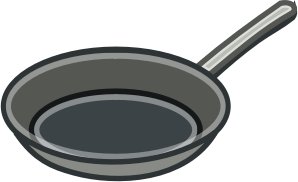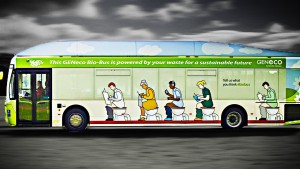It’s cold where I am right now. Really cold. The kind of cold that breaks records and the water main in front of my house… So most people around here are thinking about turning the heat up, not turning it down. But turning it down is better for the earth and for our wallets. So here are a few tips to make turning it down a bit easier. 
- The easiest thing you can do is to bundle up. Sure, I would love to walk around in a sundress with bare feet all year. But I’d also like the earth to be around for more than just one more generation. So I turn the heat down to limit my energy usage, and I bundle up. Right now I have on socks, slippers, two pairs of pants, two long sleeved shirts, and a zip up sweatshirt. If you’re sitting there reading this in a T-shirt with the heat set above 70, maybe put on a sweatshirt, maybe even a hat, and turn it down. At night, toss an extra blanket on your bed.
- Check your windows. Sometimes a window seems to be closed all the way. But when you lock it it often closes even more. So make sure all your windows are locked. Get insulated curtains. Leave curtains open during the day to let the sun’s heat in, and close them at night. Consider covering drafty windows with plastic. And if your windows are old, getting new ones is pricey up front, but it might save you money on heating in the long-run.
- Check your doors. If there is a gap underneath that’s letting in cold air, consider a draft dodger. You can buy one, make your own, or use a rolled up towel or pipe insulation. If you don’t use a door, you can tack a blanket over it. And, just like windows, if your doors are old, it may save you in the long-run to get new ones.
- Keep your house’s humidity at a comfortable level. Moderately humid air feels warmer than dry air (and can also stop your skin from getting dry and cracked in the winter). But overly humid (damp air) can make you feel colder (and can lead to mold). So if your house is dry, you can buy a dehumidifier. If you take baths, you can leave the water in the tub for a while after your done. You can also leave bowls of water around the house, especially near heat vents and fireplaces. If your house is damp, get a dehumidifier and check your faucets and pipes for leaks.
- If you have a fireplace, consider an inflatable draft blocker, a chimney mounted damper, or an insulated glass door to block drafts.
- Use a hot water bottle or microwavable corn sack to keep you warmer in bed or when you’re lounging on the couch.
- Do some baking. You shouldn’t run the oven just to run the oven. But if you’ve been wanting to bake something anyway, do it on a cold day when that extra oven heat might make it more comfortable to turn the heat down a degree or two.
- In the future, keep an eye out for clothes and blankets that have been dipped in silver nanowire (AgNW) solution. It’s something that researchers are working on at Stanford. AgNW coated clothing will reflect 90% of your body heat back to you (most clothes only reflect 20% back to you).


